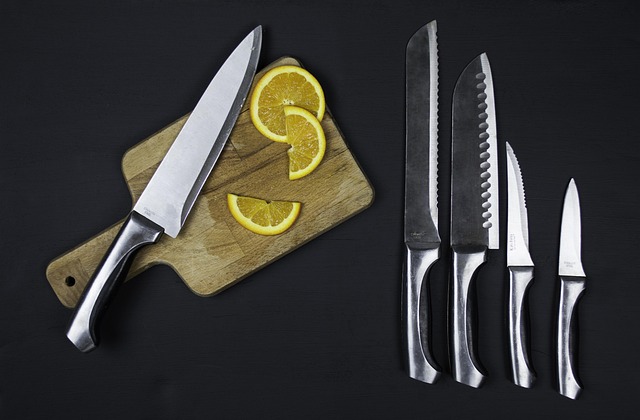Vinyl kitchen flooring is a top choice for its durability, water resistance, low maintenance, and variety of styles, including Luxury Vinyl Tile (LVT) and sheet vinyl. It's easy to install and clean, requires minimal effort, and resists fading, scratching, and stains, making it ideal for busy households and contributing to home energy efficiency.
Transform your kitchen with durable and low-maintenance vinyl kitchen flooring! This versatile option offers a seamless blend of style and practicality. With its easy cleaning and maintenance, vinyl is perfect for busy households. Discover how this material stands up to moisture, stains, and heavy foot traffic while remaining scratch-resistant and cost-effective. Explore various types, installation methods, and cleaning tips to find the ideal vinyl kitchen flooring solution that suits your needs.
- Understanding Vinyl Kitchen Flooring: Advantages and Durability
- Why Choose Vinyl for Easy Maintenance?
- Types of Vinyl Kitchen Flooring Options
- Installation, Cleaning, and Longevity: A Comprehensive Guide
Understanding Vinyl Kitchen Flooring: Advantages and Durability
Vinyl kitchen flooring has become an increasingly popular choice among homeowners and professionals alike, thanks to its numerous advantages and durability. This type of flooring is made from a flexible material that offers exceptional resistance to scratches, stains, and even heavy traffic. One of its key benefits is ease of maintenance; vinyl floors are straightforward to clean, requiring only regular mopping or vacuuming. They also repel water, making them ideal for kitchens where spills and splashes are common.
The durability of vinyl kitchen flooring is a significant selling point. It can withstand the wear and tear associated with high-moisture environments and intense use. Moreover, vinyl floors offer excellent insulation, contributing to energy efficiency in your home. With proper care, these floors can last for many years, maintaining their original look and appeal.
Why Choose Vinyl for Easy Maintenance?
Vinyl kitchen flooring is a popular choice for many homeowners due to its exceptional ease of maintenance and cleaning. This durable material is designed to withstand high foot traffic, making it ideal for busy households. One of the key advantages of vinyl is its water-resistant nature; spills and accidents can be easily wiped away without causing any significant damage or leaving stains. Unlike some other flooring options that may require specialized cleaning products, vinyl kitchen flooring can be maintained with simple, everyday household cleaners.
Additionally, vinyl’s smooth surface prevents food particles from sticking, making it a hygienic option. Regular mopping or sweeping is usually all that’s needed to keep the floors looking clean and fresh. Its low-maintenance properties make vinyl an attractive choice for those who desire a pristine kitchen environment without spending hours on cleaning.
Types of Vinyl Kitchen Flooring Options
When considering kitchen flooring that’s easy to maintain and clean, vinyl kitchen flooring options stand out for their durability and low-maintenance nature. Vinyl floors are made from materials like PVC (polyvinyl chloride) and can be installed in various ways, including luxury vinyl tile (LVT), sheet vinyl, or vinyl planks. LVT offers a high-resolution design that mimics the look of ceramics or wood, making it an attractive and versatile choice. Sheet vinyl is a continuous roll that’s easy to install and replace, while vinyl planks provide the appearance of hardwood with the added benefit of water resistance.
Each type of vinyl kitchen flooring has its unique advantages. LVT and vinyl planks are particularly suitable for kitchens due to their ability to withstand moisture and stains. The seamless nature of sheet vinyl makes it ideal for creating a continuous, easy-to-clean surface. Moreover, vinyl floors are quiet underfoot, providing comfort and reducing noise levels in the kitchen. This durability and ease of care make vinyl kitchen flooring an excellent choice for busy households seeking low-maintenance solutions.
Installation, Cleaning, and Longevity: A Comprehensive Guide
When considering kitchen flooring, installation is a key factor for easy maintenance and cleaning. Vinyl kitchen flooring, known for its durability and water-resistant properties, offers a straightforward installation process. Most options are either glued down or fitted with locking mechanisms, making it simple to lay even in tight spaces. This quick installation not only saves time but also ensures your floor can be ready for use almost immediately, allowing you to focus on enjoying your new kitchen space.
Regular cleaning is another aspect where vinyl flooring excels. Its smooth surface repels dirt and grime, making it easy to wipe clean with minimal effort. A simple sweep or vacuum, followed by a quick mop, is often all that’s needed to keep your vinyl kitchen floor sparkling. Moreover, vinyl’s resistance to fading and scratching means it maintains its original appearance over time, contributing to its longevity. With proper care, vinyl kitchen flooring can last for years, providing a practical and aesthetically pleasing solution that requires minimal maintenance.
When it comes to effortless maintenance and cleaning, vinyl kitchen flooring stands out as an excellent choice. Its durability, versatility, and low-maintenance properties make it a top option for busy households. With various styles and designs available, you can easily find a vinyl floor that complements your kitchen’s aesthetic. Moreover, the installation process is straightforward, ensuring a DIY-friendly upgrade. Regular cleaning routines are simplified, allowing you to focus on enjoying your space rather than spending hours maintaining it. So, opt for vinyl kitchen flooring, and embrace a clean, stylish, and low-maintenance home.
